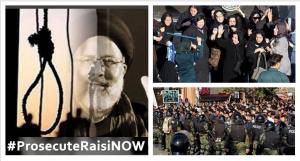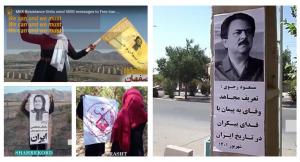(Video) Iran’s Democratic Opposition Has fought 57 years for democracy
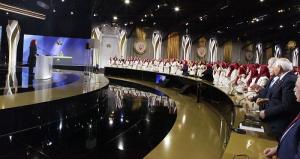
On Tuesday, the (PMOI/MEK) marked the 57th anniversary of its founding. The occasion provided members and supporters to celebrate the regime’s longstanding survival in the face of violent repression, first by the Shah and then by the mullahs’ theocracy.
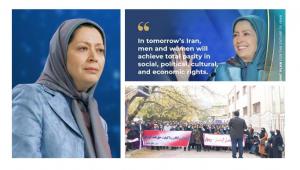
The MEK has done much more than survive while continually promoting a democratic alternative to both repressive systems. In recent years, it has very clearly become the prime source of hope for the freedom of the Iranian people to facilitate regime change.
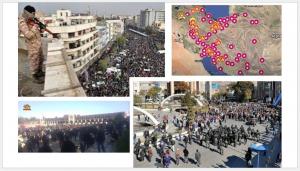
Since 2017, there have been at least nine uprisings, plus countless other protests & acts of civil disobedience. The first of the uprisings spanned much of January 2018 and encompassed well over 100 cities and towns, with slogans like “death to the dictator."
The Resistance Units expanded their strategies for reaching the public, taking over state media signals, and government websites on several occasions in 2022.
The occasion provided members and supporters with an opportunity to celebrate the regime’s longstanding survival in the face of violent repression, first by the Shah’s dictatorship and then by the mullahs’ theocracy.
But the MEK has done much more than survive while continually promoting a democratic alternative to both repressive systems. In recent years, it has very clearly become the prime source of hope for the freedom of the Iranian people, as well as the primary driver of popular uprisings that aim to facilitate regime change.
Since the end of 2017, there have been at least nine such uprisings, plus countless other protests and acts of civil disobedience. The first of the uprisings spanned much of January 2018 and encompassed well over 100 cities and towns, featuring provocative slogans like “death to the dictator”.
In the face of such direct and widespread challenges to his own hold on power, the regime’s Supreme Leader Ali Khamenei responded by undermining his own regime’s propaganda to acknowledge that the MEK had played a leading role in the unrest and had “planned for months” to facilitate it.
Khamenei’s tacit acknowledgment of the MEK’s popularity prompted an upsurge of indiscriminate repression, which reached new heights in November 2019 at the time of another nationwide uprising, this one nearly twice as large as its predecessor.
With crowds of protesters assembled in nearly 200 localities, security forces opened fire on many of them, killing around 1,500 before arresting thousands of others.
The Iranian judiciary, then under the control of the man who would go on to be appointed president in June 2021, subjected many of those arrestees to systematic torture over the course of several months.
These actions affected Iranians from all walks of life and only helped to reinforce the sense of identity between the general public and the MEK’s dedicated activists.
Those activists, formally known as “Resistance Units”, continued to encourage the Iranian people’s defiance in the face of mounting repression and ultimately succeeded in limiting voter turnout for the sham presidential election to around ten percent of the population.
Soon thereafter, the Resistance Units expanded their strategies for reaching the public, taking over state media broadcast signals, public address systems, and government websites on several occasions in 2022.
Those efforts provided new outlets for familiar slogans and sentiments, mirroring the images and text that have regularly been posted or painted on public streets and sometimes in place of the regime’s own propaganda billboards.
In the run-up to the election that brought Ebrahim Raisi to power, the ME urged Iranians to “vote for regime change,” and since then it has guided the people in calling for the ouster of the new president right alongside the longstanding supreme leader.
On the streets and on hijacked state broadcasts, the MEK has championed Mrs. Maryam Rajavi, the President-elect of NCRI, and Mr. Massoud Rajavi, Iranian resistance leader, who in 1972 became the last surviving member of the MEK’s Central Committee, following the systematic executions of other officials, including the group’s three original founders, Mohammad Hanifnejad, Saeid Mohsen, and Ali Asghar Badizadegan.
This mass martyrdom under the Shah’s regime was repeated on an even grander scale after the mullahs hijacked the 1979 Iranian Revolution and established absolute rule by hardline clerics, in defiance of the democratic aspirations that had guided most Iranians’ support for the Shah’s overthrow.
In 1981, the new authorities opened fire on a MEK-led demonstration in Tehran, and in 1988, then Supreme Leader of the regime, Ruhollah Khomeini issued a fatwa declaring all supporters of the MEK guilty of the capital offense known as “enmity against God”.
The ensuing massacre of political prisoners claimed over 30,000 lives in three months, of which about 90 percent were MEK members. But through it all, Massoud Rajavi remained a symbol of the organization’s resistance.
Many of the massacre’s victims refused to disavow their membership or their ideology, even at the cost of their own lives. Thus they followed the example set by Hanifnejad, Mohsen, and Badizadegan more than 15 years earlier when they rejected the previous government’s offer to commute their capital sentences in exchange for a definitive halt to their political opposition.
The same spirit of defiance was on prominent display throughout the 1988 massacre and again in the wake of the November 2019 crackdown. In the latter instance, it was not just political prisoners but large swaths of Iranian society that became embodiments of that defiance, with university students and ordinary citizens coming back out into the streets to protest across more than a dozen provinces less than two months after 1,500 of their compatriots were killed, and while many others were only beginning their lengthy ordeals in Iranian detention facilities.
In fact, the spirit of defiance remains apparent even today, as anti-government protests remain a near-daily phenomenon despite the government under Raisi promoting an ever-stronger climate of repression and pushing the rate of executions to more than twice that of the previous year.
Still unable to walk back Khamenei’s acknowledgment of MEK influence in January 2018, regime authorities are increasingly warning of the potential for further uprisings.
A recent state-financed study even found that 75 percent of the population would likely take part in the next nationwide movement if it were to break out in the near future.
The history of the past 57 years leaves no doubt that when that happens, the MEK will be leading the push for regime change.
And whatever happens then, it is reasonable to assume that the organization that survived 57 years of brutal repression and tireless propaganda will go on surviving and attracting more supporters both at home and abroad until the collapse of Iran’s theocratic dictatorship.
Shahin Gobadi
NCRI
+33 6 61 65 32 31
email us here
Within months after the 1979 revolution, Khomeini labeled anyone challenging his rule as “corrupt” and started an agenda to eliminate all political dissidents.

